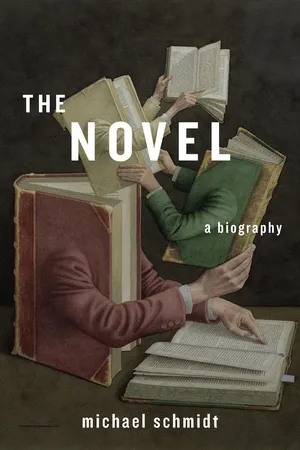History
Claude McKay
Claude McKay was a key figure in the Harlem Renaissance, a cultural movement that celebrated African American art and literature in the 1920s. He was a Jamaican-American writer and poet known for his works that explored themes of racial and social injustice. McKay's poetry and novels, such as "Home to Harlem," made a significant impact on the African American literary tradition.
Written by Perlego with AI-assistance
Related key terms
2 Key excerpts on "Claude McKay"
- eBook - ePub
Cultural Entanglements
Langston Hughes and the Rise of African and Caribbean Literature
- Shane Graham(Author)
- 2020(Publication Date)
- University of Virginia Press(Publisher)
His earliest poems take their themes from his native Jamaica, and many of them are written in Jamaican vernacular dialect, making him an important figure in the history of Caribbean literature. But he left Jamaica for the United States in 1912 at the age of twenty-two and would never again live in the West Indies or write poetry in the Jamaican patois. Partly by virtue of his association with the Harlem Renaissance and the inclusion of his writing in such important anthologies as Alain Locke’s The New Negro, Langston Hughes and Arna Bontemps’s The Poetry of the Negro, and David Levering Lewis’s Harlem Renaissance Reader, McKay is often counted as an honorary African American. But he spent most of the crucial years of the Harlem Renaissance (roughly 1917–29) living not in Harlem but in England, Russia, southern Europe, and northern Africa. The most profound precedent that McKay set for the younger Hughes, I maintain, was an aesthetic deeply planted both in politics and in the soil of ordinary people’s cultural life. Hughes drew vernacular influences from Whitman, Sandburg, and Dunbar as well, but McKay’s brand of proletarian art had a demanding political urgency to it that appealed to Hughes the radical sloganeer who would emerge in the 1930s. The defiant political stance McKay took or implied in his writings might well have emerged from his admiration for Russian literature and his engagement with Soviet society, which, as Kate Baldwin notes, “produced theories about using culture not only as a tool of internationalism but also interracialism.” 19 Wayne Cooper, in one of his section introductions in The Passion of Claude McKay, argues that McKay had a vision of black identity very different from the elitism of Du Bois’s belief in the “talented tenth”: “McKay pushed forward in his novels and stories the ignorant black folk of farm and city as the potential directors of their own fate - eBook - ePub
- Michael Schmidt(Author)
- 2014(Publication Date)
- Harvard University Press(Publisher)
He came to Harlem at the very beginning of the Renaissance. Harlem Shadows (1922), a collection of his poems, was one of the Renaissance’s founding texts. But his fiction most clearly expresses his originality of subject matter and political theme. Though he did not join the Communist Party, he spent twelve years in Europe. First he went to London in 1919, at a time when Anglo-American modernism was finding its way, but where there were also radical groupings into which McKay fit more comfortably. He went on to the Continent, in particular to the Soviet Union, where he was welcomed and met some of the great men of the day, including Trotsky. He wrote essays about the experience of black people in America, and these were translated and published in Russia. McKay’s novel Home to Harlem (1928) was a critical and commercial success, “scandalous” in its portrayal of seamy, credible Harlem life in which the struggle for survival in a white-mastered world is developed with Lawrencian intensity but without the support of Lawrencian form and its resolutions. His characters are psychologically complex; they exist in relation to one another in realized environments, one hostile and the other, Harlem, habitable. Du Bois might have been expected to admire the quality of imagination and the success of the writer, but he objected to the ways in which the sexual lives of Harlem were evoked, proving himself, however modern his mission, a man of Victorian values
Learn about this page
Index pages curate the most relevant extracts from our library of academic textbooks. They’ve been created using an in-house natural language model (NLM), each adding context and meaning to key research topics.

